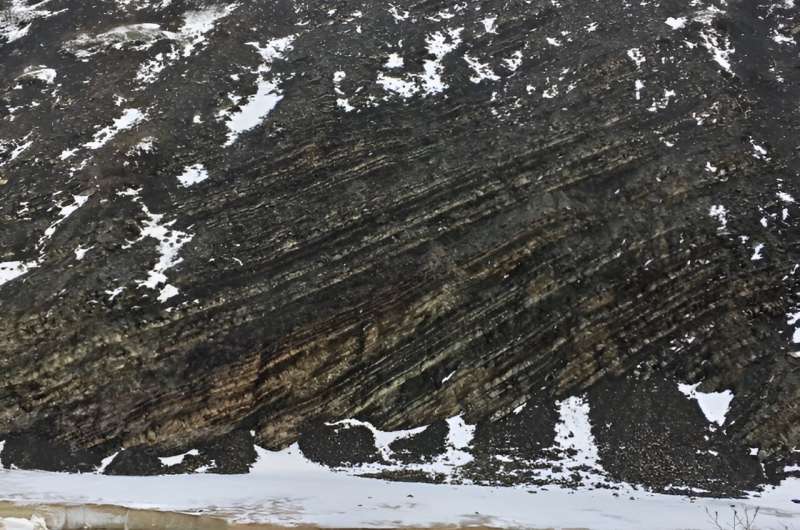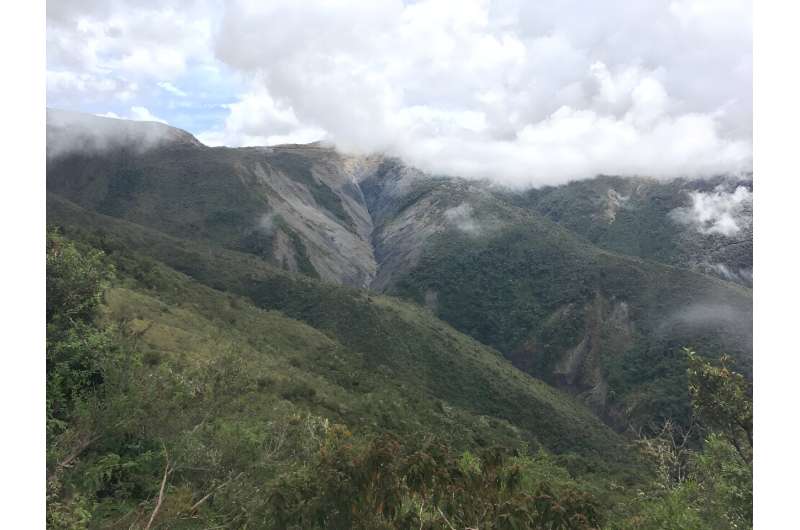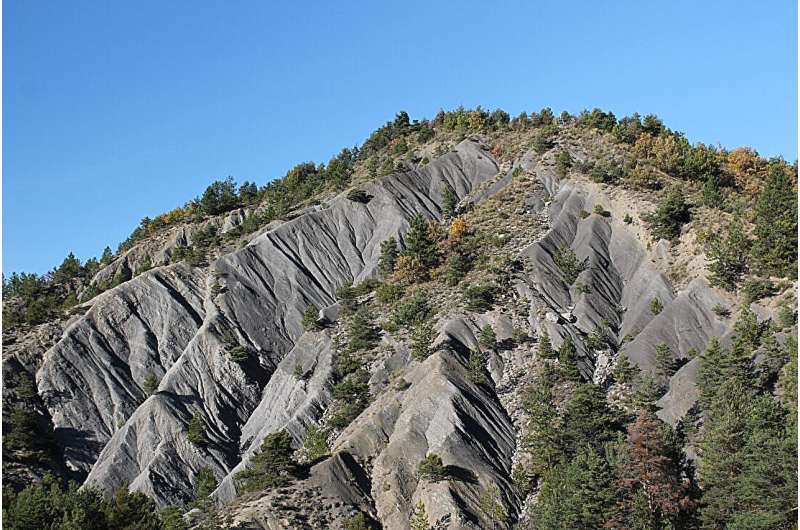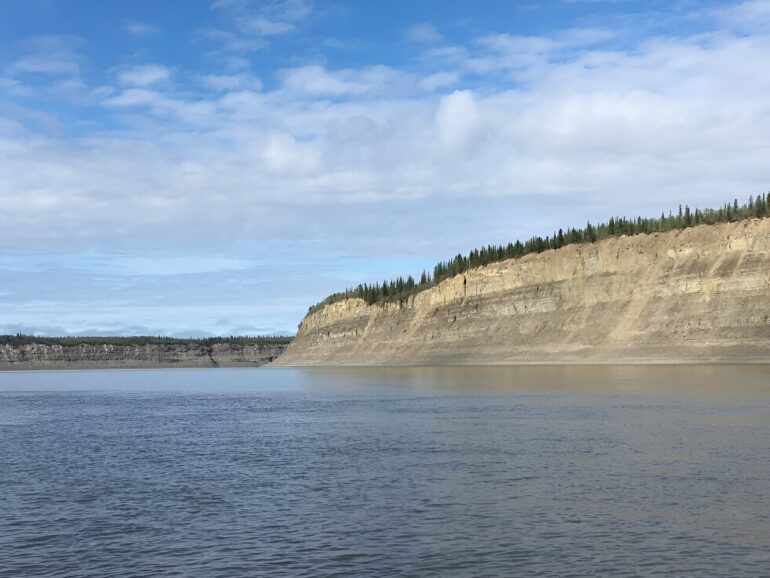A new study led by the University of Oxford has overturned the view that natural rock weathering acts as a CO2 sink, indicating instead that this can also act as a large CO2 source, rivaling that of volcanoes. The results, published today in the journal Nature, have important implications for modeling climate change scenarios.
Rocks contain an enormous store of carbon in the ancient remains of plants and animals that lived millions of years ago. This means that the “geological carbon cycle” acts as a thermostat that helps to regulate the Earth’s temperature.
For instance, during chemical weathering rocks can suck up CO2 when certain minerals are attacked by the weak acid found in rainwater. This process helps to counteract the continuous CO2 released by volcanoes around the world, and forms part of Earth’s natural carbon cycle that has helped keep the surface habitable to life for a billion years or more.
However, for the first time this new study measured an additional natural process of CO2 release from rocks to the atmosphere, finding that it is as significant as the CO2 released from volcanoes around the world. Currently, this process is not included in most models of the natural carbon cycle.
The process occurs when rocks that formed on ancient seafloors (where plants and animals were buried in sediments) are pushed back up to Earth’s surface, for example when mountains like the Himalayas or Andes form. This exposes the organic carbon in the rocks to oxygen in the air and water, which can react and release CO2. This means that weathering rocks could be a source of CO2, rather than the commonly assumed sink.

Shale rocks high up in the remote Mackenzie mountains Canada, which contain lots of rock organic carbon and are hotspots of CO2 release. © Robert Hilton.
Up to now, measuring the release of this CO2 from weathering organic carbon in rocks has proved difficult. In the new study, the researchers used a tracer element (rhenium) which is released into water when rock organic carbon reacts with oxygen. Sampling river water to measure rhenium levels makes it possible to quantify CO2 release. However, sampling all river water in the world to get a global estimate would be a significant challenge.
To upscale over Earth’s surface, the researchers did two things. First, they worked out how much organic carbon is present in rocks near the surface. Second, they worked out where these were being exposed most rapidly, by erosion in steep, mountain locations.
Dr. Jesse Zondervan, the researcher who led the study at the Department of Earth Sciences, University of Oxford, said, “The challenge was then how to combine these global maps with the river data, while considering uncertainties. We fed all of our data into a supercomputer at Oxford, simulating the complex interplay of physical, chemical, and hydrological processes. By piecing together this vast planetary jigsaw, we could finally estimate the total carbon dioxide emitted as these rocks weather and exhale their ancient carbon into the air.”
This could then be compared to how much CO2 could be drawn down by natural rock weathering of silicate minerals. The results identified many large areas where weathering was a CO2 source, challenging the current view about how weathering impacts the carbon cycle.

Landslides in the high Andes of Peru, exposing rocks full of organic matter to weathering which can release CO2. © Robert Hilton.
Hotspots of CO2 release were concentrated in mountain ranges with high uplift rates that cause sedimentary rocks to be exposed, such as the eastern Himalayas, the Rocky Mountains, and the Andes. The global CO2 release from rock organic carbon weathering was found to be 68 megatons of carbon per year.
Professor Robert Hilton (Department of Earth Sciences, University of Oxford), who leads the ROC-CO2 research project that supported the study, said, “This is about 100 times less than present day human CO2 emissions by burning fossil fuels, but it is similar to how much CO2 is released by volcanoes around the world, meaning it is a key player in Earth’s natural carbon cycle.”
These fluxes could have changed during Earth’s past. For instance, during periods of mountain building that bring up many rocks containing organic matter, the CO2 release may have been higher, influencing global climate in the past.

High erosion in southern France exposes these sedimentary rocks to weathering, releasing CO2 as the ancient organic carbon breaks down. © Robert Hilton
Ongoing and future work is looking into how changes in erosion due to human activities, alongside the increased warming of rocks due to anthropogenic climate changes, could increase this natural carbon leak. A question the team are now asking is if this natural CO2 release will increase over the coming century. “Currently we don’t know—our methods allow us to provide a robust global estimate, but not yet assess how it could change,” says Hilton.
“While the carbon dioxide release from rock weathering is small compared to present-day human emissions, the improved understanding of these natural fluxes will help us better predict our carbon budget,” concluded Dr. Zondervan.
More information:
Jesse Zondervan, Rock organic carbon oxidation CO2 release offsets silicate weathering sink, Nature (2023). DOI: 10.1038/s41586-023-06581-9. www.nature.com/articles/s41586-023-06581-9
Provided by
University of Oxford
Citation:
New research finds that ancient carbon in rocks releases as much carbon dioxide as the world’s volcanoes (2023, October 4)



